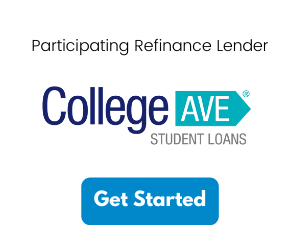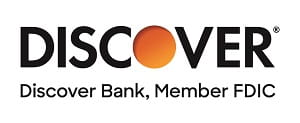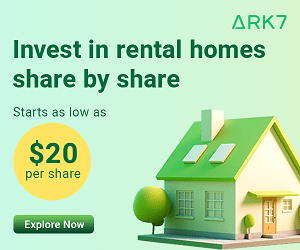Summary: Federal student loans offer a great benefit: flexible repayment plans. You can choose a plan that fits your financial needs and helps you pay off your loans as quickly as possible. You can also switch plans when you need to.
Paying back your federal student loans can be tough. Fortunately, federal student loans offer flexible repayment options to make the process easier. This guide will help you understand how federal student loan repayment works so you can successfully manage your debt.
Student Loan Repayment Relief
Need Help Paying Your Student Loans? Edvisors is giving out $2,500 in Student Loan Repayment Relief! If you would like a chance to win $2,500 towards paying down your student loans, make sure you enter!
- One winner per quarter.*
- Quick and easy form.
Before Repayment Begins: Exit Counseling
Before repayment begins, you have to complete an exit counseling session. Exit counseling reviews the terms and conditions of the loans, including repayment options, as well as your rights and responsibilities. Some colleges won’t release your official academic transcripts and diplomas if you fail to complete exit counseling.
Repayment Plan Options
Federal student loan borrowers can choose from a variety of repayment plans when it's time to start paying back their student loans. To select or change repayment plans, contact your federal student loan servicer. You can find your servicer's name and contact information by logging in to the student access portal My Federal Student Aid using your FSA ID.
Click the name of the plan in the charts below for more details on how that plan works.
Payment plans that aren’t based on your income
| Name of Plan | Key Features | Notes |
|---|---|---|
| Standard Repayment |
|
|
| Graduated Repayment |
|
|
| Extended Repayment (Without Consolidation) |
|
|
| Extended Repayment (With Consolidation) |
|
|
Payment plans that are based on your income
| Name of Plan | Key Features | Notes |
|---|---|---|
| Revised Pay-As-You-Earn Repayment (REPAYE) |
|
|
| Pay-As-You-Earn Repayment (PAYE) |
|
|
| Income-Based Repayment (IBR) |
|
|
| Income-Contingent Repayment (ICR) |
|
|
| Income-Sensitive Repayment (ISR) |
|
|
What is Discretionary Income?
Your discretionary income is your adjusted gross income (reported on your federal income tax return) minus 150% of the poverty line.
Each year, the federal government publishes a set of poverty guidelines that help determine eligibility for various programs, including the federal student loan repayment plans that are based on income.
Are My Student Loans Direct Loans or FFELP?
All new federal student loans borrowed since July 1, 2010 are Direct Loans. Loans taken out earlier may be either Direct Loans or part of the FFEL (Federal Family Education Loan) program. To find out which type of loans you have, log in to your student portal My Federal Student Aid using your FSA ID.
Certain versions of the extended and graduated repayment plans base the loan term on the amount owed. Higher loan amounts yield longer repayment terms. These repayment plans are available to borrowers who have consolidated their loans. The repayment terms are summarized in the following table.
| Loan Balance | Extended Loan Term | Decrease in Monthly Payment | Increase in Total Interest |
|---|---|---|---|
| Less than $7,500 | 10 years | ||
| $7,500 to $9,999 | 12 years | About 1/8 | More than 1/5 |
| $10,000 to $19,999 | 15 years | About 1/4 | More than 1/2 |
| $20,000 to $39,999 | 20 years | About 1/3 | More than double |
| $40,000 to $59,999 | 25 years | About 2/5 | Almost triple |
| $60,000 or more | 30 years | About 1/2 | About 3 1/2 times |
Federal Student Loan Consolidation
A Direct Consolidation Loan allows you to combine all of your existing federal student loans into one loan with a single monthly payment. Consolidation can reduce your monthly payments by as much as 50% by increasing the term of the loan. This means you will pay more interest over the life of the loan.
Learn more about Direct Consolidation Loans
Student Loan Forgiveness
Under certain circumstances, the federal government will forgive (cancel) all or part of a student loan. Here are some options for qualifying for federal student loan forgiveness:
- Work in a public service job
- Perform military service
- Perform volunteer work
- Teach or practice medicine in low-income and rural communities
Learn more about student loan forgiveness
Student Loan Cancellation and Discharge Options
In extreme cases, you may qualify to have your federal student loans discharged. Here are some circumstances that may qualify you for federal student loan discharge:
- Total and permanent disability
- Death
- Identity theft
- Closed school
Learn more about federal loan cancellation and discharge
Student Loan Deferment and Forbearance
Loan deferment is a temporary period when you don’t make payments on your loans. You have to apply and be approved for deferment. If you have Direct Subsidized Loans and Perkins Loans, the federal government pays any interest that adds up during the deferment. If you have Direct Unsubsidized Loans, you are responsible for paying any interest that adds up during the deferment.
Loan forbearance is another temporary period when you either make reduced payments or don’t make payments on your loans. You would typically request forbearance if you are experiencing financial difficulty.
Deferment and forbearance are good loan management tools and can help you avoid student loan default.
Recommendations
- If you’re almost finished with school, attend an exit counseling session.
- To save the most money in interest, choose the payment plan with the highest monthly payment you can afford.
- If you’re having trouble making your payments, switch to a different payment plan by contacting your loan servicer.
- Consider student loan deferment and forbearance if you need to temporarily stop making payments.
- If you are trying to get Public Service Loan Forgiveness, make sure you choose one of the income-based repayment plans.
- Look into federal student loan consolidation if you want to combine multiple loans into a single loan with a single payment.










